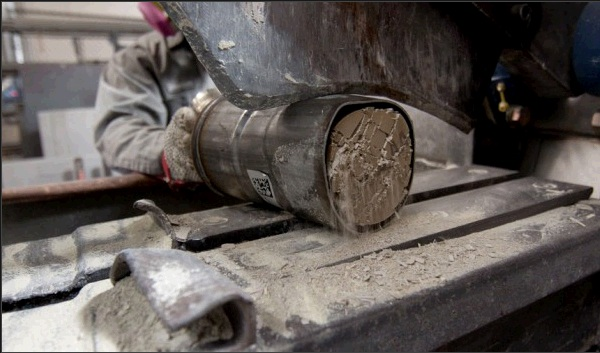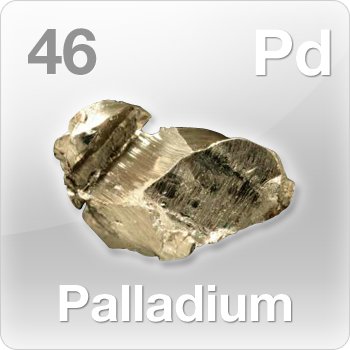Our company gets asked almost daily how and what goes into recycling Catalytic Converters from vehicles our company is crushing down for recycling and what happens to the converters we remove from these vehicles and buy off the public every day? The simple answer is we sell them to a refinery directly. But below we will go into detail on what happens to the catalytic converters including what precious metals are recovered as part of the process.
Catalytic Converter Make up:
Each Catalytic Converter is made up of the pretty much the same components but each one is designed and manufactured with different amount of precious metal but we will get into that later.
The basic components of any catalytic converter include:
The Stainless Steel Outer Shell
The honey comb where the precious metal is stored
Catalytic Converter Removal or Purchase:
Since our company specializes in recycling of End of Life Vehicles we purchase from the public, businesses, and auctions we will start there.
Once any vehicle arrives on one of our lots we inventory the vehicle and assign it a yard number and from there the vehicle is sent to our draining rack to be drained of all fluids. Once all the fluids, and battery have been removed from the vehicle our technicians then cut the catalytic converter(s) off. Once the converter(s) is cut off the vehicle it is then thrown into a bin to await to being shipped to our converter processing room.
Once its shipped over to the converter processing area the technician then takes each catalytic converter individually and cuts it on the shear (see example image below). By doing this were able to recover the honey comb which contains the precious metals such as Rhodium, Platinum, and Palladium. But we also recover the dust and for most people when you first hear that we recover the dust from the catalytic converters you maybe wondering why dont we just dispose of it? Well the simple answer is most of the precious metals contained inside the catalytic converter are actually inside the dust we recover and not inside the honey comb.

One of the biggest differences we have been seeing over the last couple of years is that were recovering more palladium then any other precious metal from the catalytic converters. This is more likely due to the increasing Emissions requirements for gasoline vehicles across the country.
After the catalytic converters are cut, and the honey comb and dust are then cleared in a 55 gallon drum lined with industrial grade plastic to hold the material into it gets to the refinery for sampling. For us that means we need over 2000lbs in order for them to sample and refine the material. We line 4 barrels on each pallet to await shipment and there strapped together using metal strapping, then shrink wrapped then placed on the loading dock to await transport to the refinery directly. The trucks picking up are third party trucks and due to the value they are hauling we only ship when its a full truck load. The drivers are instructed not to stop unless required by the DOT, or fuel since its a 5 hr drive to the refinery on average.
After the honey combs are shipped out we still have the oxygen sensors, and stainless steel casings plus in some cases the steel pipe going into and out of the converter. These materials are separated and the oxygen sensors are placed in a large flat rate box to go to a buyer in New York for a set price per pound (the refinery wont accept the sensors the way they are we have asked).
After all the sorting is done the steel pipes are loaded onto a truck to be transported to the scrap yard for one of our yards thats a two hour trip alone so we try to pickup all our yards in one day and transport it all in at once. Some yards just throw the pipe into the cars while they await AIM Recycling of Bangor Maine to crush them and transport the cars to Saint John New Brunswick Canada for Shredding.
Stainless steel of this type may seem easy to recycle but in most cases its 316 magnetic but can also be 304 or even 402 stainless but due to the salt on the roads you wouldn't believe it just by looking at it. Most of the time the stainless is thrown in the cars due to no buyers in our local area buying the stainless. This stainless can be sold to a Stainless steel manufacturer and a few steel mills do buy it but shipping cost isn't low enough to justify shipping the stainless from Maine.
Safety equipment our technicians use include:
Safety Glasses
Work Gloves
Respirator for decanning
Ear Protection
Dismantlers are also trained in using cutting torches, safety related issues when draining vehicles, etc...
Refiners Job
When we ship the material to the refinery we ask for a fire assay to be done. A fire assay is when they take a small sample of the material forwarded to them and heat / melt it down into liquid form, from that point it is poured into a small ingot (some places use a smaller sample then this) and then several chemical test are run on it and they use custom software to get all the precious metals in the converter. Below are the typical metals but others have been found over the years.
Metals typically found in the dust and honey comb material:
Rhodium:
Platinum:

Palladium:

These metals are then run through several chemical baths and are analyzed several times before the final results are calculated and released. This whole process can take from a week to 60 days alone. But we wont go into the chemicals used due to the dangerous nature of using them incorrectly (same as the warning we have to issue to people interested in refining gold, platinum, and silver from ewaste).
How do we figure out what the average catalytic converter value should be?
We do this by sorting our catalytic converters at the time of removal. This is done by the following methods:
Import
Domestic
Foreign
Pre Converters
Misc Converters that don't fit into other categories.
All our converters are shorted by there type but there also shorted into pre types such as Large GM's are seperate then a large Ford but are mixed with Large Jeep converters due to the similar precious metal content.
Misc catalytic converters include the small round converters found on gm blazers / jimmys, daewoos, some kias, and subarus. These precious metals are usually around the same make up but this can vary greatly by the vehicles year and when it was manufactured that year.
A good example of this is with Honda center 02 sensor converters. We have seen some bring as little as $250 but some bring as much as $400 after sending it to a seperate lab for a special analzing with there in house lab. This was done due to the fact that 5 franchise locations were asking what they should price it at. But also keep in mind these test were done when prices were higher then todays scrap prices. But even now were seeing around $230 to $300 average on that one converter. Each converter is usually averaged out but those days are quickly going away were we could buy from a list and through the converters together.
As the years are going on were seeing more and more converters that will have to go for testing due to different designs, different chemical make up, and more. Soon it maybe normal to have to ship your converters for in house testing and wait a week or longer for a check due to the large difference in precious metals being recovered.
We hope this guide will help some users on here and for those interested in what goes into the catalytic converter recycling process. We did leave a few things out but will add them as needed. The process can be long and for alot of businesses it can consume alot of capital.
For the yard operators just starting out try to buy the cars as cheap as possible but we know this is hard in large areas or where theres more then 5 auto recycling yards. The Maine location is lucky they can still get cars for $50 to $300 each but we try to stay around $125 each due to licensing cost at city, state, and DEP level all going up.
For the people curious below is a list of the Maine licenses were required to hold:
City Junk Yard Permit $50 (renewed yearly) or we can get a City Auto Recycling License for 5 years for $250
State Recycling License $150 per year
(Recycler license can be obtained for Free if we got our car dealer license but we opted not to)
Industrial Storm Water Discharge Permit $310 per year
Ewaste Dismantler $70 per year
Haz Mat License $Varies by type
Solid Waste Transporter License $100 for 2 trucks every 2 years.
Some of the insurance we carry includes:
Surety Bond (not required but have one just in case)
Fire / Flood Insurance
Casulty Insurance
Workers Comp
General Liability
Garage Keepers (for vehicles being impounded or repaired by our company)
Commercial Auto with commercial license plates
(Maine has wrecker plates available for $50 for light wrecker or $200 for heavy wrecker per year but like commercial plates since we can tow commercially with them easier)
Please keep in mind we made the choice of getting this much insurance Maine recyclers are not required to have insurance at all. All we need is a local signature saying our junk yard permit was issued to receive / renew our recycler license each year. But all new applicants are required to attend a 8 hr Title Dealer Workshop in Augusta prior to your first license being issued to you. This has changed since were first licensed we had 4 months to go after.
We hope this helped a few users and we will be adding more information plus more guides as we can. Thanks for Reading.
All images are respective property of there respective owners.
This takes me back to my days in a similar recycling facility. I was busting tires next to this big steel rack where a loader would deposit a vehicle, and a guy on the ground would torch off the converter for later use.
Downvoting a post can decrease pending rewards and make it less visible. Common reasons:
Submit